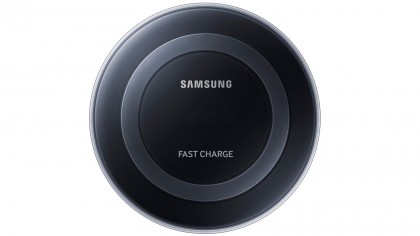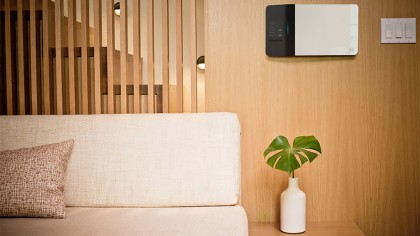Why it's still worth investing in wireless charging for your phone
A wire-free world is still coming

A few years ago it seemed that wireless charging was the next big thing. The idea was simple: you'd put your phone on the bedside cabinet and it would recharge, no searching for and fumbling around with cables required.
But for some reason it hasn't become mainstream yet – once again, the predicted uptake in a new technology has stalled, despite Samsung's top-end S6 and S7 models allowing you to charge off any wireless base station.
However, wireless charging is still only just getting started – and rather than writing it off as a passing fad, it's actually time to start getting excited about wireless all over again.
Wireless charging's big problem
Many people have used wireless chargers in the past, but they've tended to head back to using a good old cable pretty quickly, because of one rather fundamental issue: wireless isn't fast enough.
Ultra-fast wired charging for Android phones is now very common, enabling you to almost fully replenish the battery in half an hour or so. We've started to expect speed. By contrast, most of today's wireless chargers will take hours to refill a phone, particularly one with a large battery like the 3600mAh Samsung Galaxy S7 Edge.
However, from a technical perspective at least, this problem has already been solved.
The most common wireless charging standard in phones is Qi (pronounced "Chee"), and version 2.0 of it allows for up to 15W power transferral, three times the 'standard' amount of 5W, which is what Samsung's Fast Charge wireless charger offers at the moment.
Get daily insight, inspiration and deals in your inbox
Sign up for breaking news, reviews, opinion, top tech deals, and more.

If you own a top-end Samsung from the last year or so, there's a good chance it'll already support faster wireless charging – the Samsung Galaxy S6 Edge and Galaxy S7 family do.
If you have your eye on a Samsung wireless charge pad, though, make sure you buy the one labelled Fast Charge (£40, $41.99, AU$99.99), rather than the normal pad. It outputs at up to 9 volts 1 amp, for 9W of power rather than the usual 5W. Samsung says it'll charge your phone from flat in 120 minutes.
To get the full potential out of the Qi abilities of the top Samsung phones, though, you need a third-party Qi pad. There are a few 10-15W charge pads available, such as those from Choetech and Tenergy; that's right, they mostly come from Chinese brands no one has heard of.

However, in March 2015 LG Innotek announced a full-fat 15W wireless Qi charger, which LG says will charge a phone from 0% to 50% in 30 minutes, not far off what a fast wired charger can achieve.
This is what we need, and what we want. It's just a shame that, as the company that continues to pack wireless charging into many of its top phones, Samsung didn't get there first.
LG's own LG G5 doesn't even offer wireless charging, after all.
Wireless wars
At this point, we need to step back a bit. We've given you a very simple view of how some elements of wireless charging lag behind others, but Qi is just one of several current charging standards.
There's a war going on, and it's a bit VHS vs Betamax. Qi, the bookie's favourite, was devised by the Wireless Power Consortium (WPC), but coming up on the rails is the AirFuel Alliance, which also wants to offer the de facto wireless standard.
This alternative alliance is the ward of a couple of wireless charging technologies, not just one: PMA and Rezence, which you might also see referred to as A4WP, the original body that devised it.
Before we drown in acronyms, the important thing to note here is that while Qi uses inductive charging, the combo of PMA and Rezence means that AirFuel comprises both inductive and magnetic resonance charging respectively.

At a very basic level, inductive and magnetic resonance charging involve comparable concepts. There's a wire coil in the charge base that creates an electromagnetic field, stimulating current in a second coil in the phone/device, which is used to charge the battery.
However, while inductive wireless charging is picky about the position of the coils/phone, resonance charging is less so. Its 'throw' is wider, and a single pad can even be used to charge two phones at once.
Inductive charging's effective range is around 5mm, maxing out at around 40mm in the latest iteration. The coils have to match up closely.
With greater range, and claimed theoretical power transferral of up to 50W, resonance-based Rezence sounds like a dream technology, but right now it's problematic.
You can't buy a resonance pad yet, and while there are claims it can be more efficient than Qi, as the WPC notes in a late 2015 document "no real-world, public data exist for resonant charging efficiency".
The tech has some major backers, though. WiPower is a third, resonance-based wireless charging standard, owned by Qualcomm. I didn't mention this in the same breath as AirFuel and WPC because it simply conforms to the Rezence standard.
WiPower is already baked into several very popular Qualcomm chipsets too. It debuted in the Snapdragon 808, and was subsequently used in the Snapdragon 810 and 820. We may not be able to use it yet, but millions of phones theoretically support magnetic resonance charging.
Qualcomm's big claim for WiPower (and hence Rezence) is that it's the first wireless charging solution in production that will work with metal-bodied devices – at the moment full-metal phones have to use a charging case, rather than an inbuilt coil, in order to make use of Qi charging.
Wireless charging, then, is a glorious mess right now. And to throw in another complicating factor, Qi designer WPC claims receivers (the parts in phones) are ready for resonance charging, and have been for three years:
"All Qi receivers (phones, sleeves, backdoors, and charging cards) that have shipped in the last 3 years and continue to ship, can be charged in inductive mode as well as resonant mode," says the WPC website. They just need a compatible resonance charge pad, none of which are available yet.
The takeaway: we aren't even necessarily going to need new phones when wireless charging clicks into a higher gear, just a new charge pad.
Wireless charging in the home
Wireless charging is still 'in progress', but that hasn't stopped some companies from trying to add a friendly lifestyle angle to a technology that threatens to become an off-putting torrent of trademarks.
IKEA started making wireless charging furniture and lamps in 2015, and now offers a surprisingly wide range of products that includes plain pads, bedside tables and lights of various shapes and sizes.
The glaring issue with such a bold attempt to make wireless charging mainstream is that no iPhones natively support wireless charging. Much like NFC-based wireless payments pre-Apple Pay, this is a bandwagon begging for Apple to jump onboard. With faster charging now possible, maybe it's time.
To address this lack of support, IKEA makes a range of Qi-enabling phone covers for iPhones and popular Android handsets. However, all of IKEA's charging hardware uses the older 5W max output version of Qi that's a lot slower than a wired charger.

You could argue, though, that it doesn't matter so much if you just want a bedside table you can rest your phone on as you go to sleep.
FoneSalesman's FurniQi range has followed IKEA's lead by building 5W Qi into a small bamboo table, proving that it's more than just a fad for a single brand.
Wireless charging on the high street
Qi dominates the reality of wireless charging in the home at present, but you can actually find some rival PMA points on the high street. PMA is, as mentioned above, similar to Qi in that it's an induction-based technology.
Starbucks sided with the PMA standard rather than Qi for its experiment with in-cafe wireless charging, perhaps because it afforded the coffee giant an extra up-sell angle: there's a PowerMat PMA dongle that just slots into the charge sockets of iPhones and Androids.
There are 10 Starbucks sites in London listed as having PMA sockets in the Powermat app, which lets you find your nearest wireless charge socket. It's a free download if you want to check it out yourself.
An app called Aircharge Qi shows charge locations for Qi pads out on the street and, no great surprise, there are far more of them. And they are spread far more widely.
McDonalds 'restaurants', Ibis hotels and EE shops are just a few of the many places you'll find Qi points in the UK. There are probably far more than you'd imagine, and you can use many of them for free.
Qi charging needs to get up to speed in several respects, but it's no longer a 'future' technology, given how many outlets are offering it to bring free charging to phones.
Frankenstein radio waves
There are several promising futuristic alternatives in this field, though, and a top contender is RF charging. As with induction charging, there's a transmitter and a receiver, but instead of using an electromagnetic field to transfer energy, a radio frequency signal is the power 'source'.
RF charging's lead benefit is that it can supply energy to a whole area, for greater range than resonance or inductive charging. You might have a bowl or drawer in which your device(s) would be placed, for example.
At present this technology is geared towards low-power devices, as the power transferral is, relatively, so low. However, it could make an interesting solution for wearables with small batteries.
Look into ambitious start-ups and the research undertaken at universities across the world and you'll find a handful of comparable longer-distance wireless charging projects that appear to border on fantasy at first glance. Energous's WattUp claims to offer a charge radius of 15ft using its application of RF charging, for example.

Granted, it'll only supply 1W at 10-15ft, and 4W within 5ft, but it's a world apart from the range Qi offers, even if it is ultimately wasteful in its current form, as much of the RF signal that's transmitted is effectively lost.
- Want to know more about long-distance wireless charging? Then check out: No strings attached – why our smartphones will soon be charging by themselves.
The conundrum, regardless of the standard used, is how to focus longer-distance wireless charging. Recent research by the Universitat Autònoma de Barcelona into doing just that was published in the June edition of Advanced Materials, and referred to experiments with magnetic resonance charging.
"Enveloping the two circuits with metamaterial shells has the same effect as bringing them close together; it's as if the space between them literally disappears," writes the author in the article's abstract.
To explain that a bit better: the wireless power transmitter and receiver can use 'antennas' of a sort to boost efficiency and range, and that can only mean good things for wireless charging using existing methods.
The future of wireless charging is something of an amorphous cloud right now, but it's still an exciting future. We'll get there – it just might take a while longer that we thought.
Andrew is a freelance journalist and has been writing and editing for some of the UK's top tech and lifestyle publications including TrustedReviews, Stuff, T3, TechRadar, Lifehacker and others.
